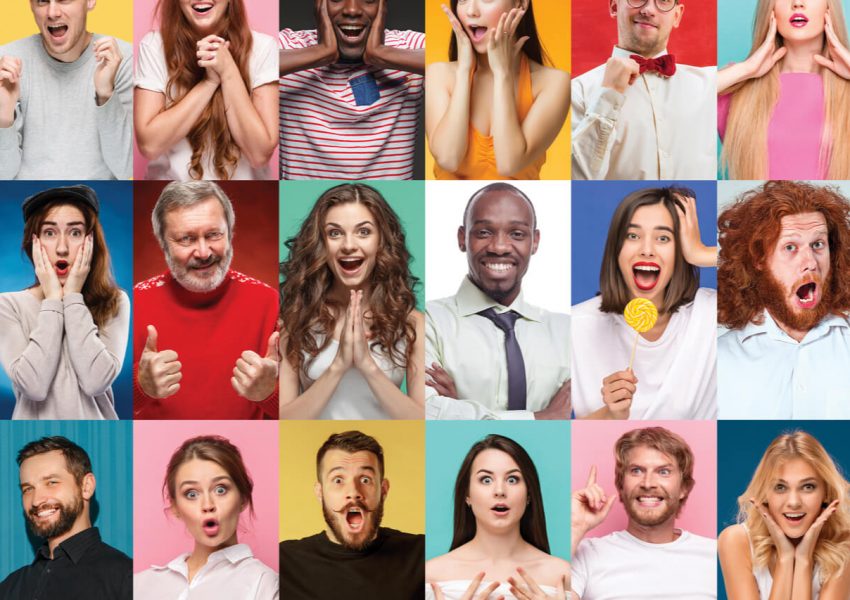Human facial expressions convey various types of meaning in different contexts. Understanding a facial expression chart may help improve our non-verbal communication. When you are happy, people around you can quickly tell in your face. You wear a smile since it is the universal language of happiness. When you smile, your lips frame your teeth, so the shine and sparkle of your pearly whites may affect your confidence in expressing yourself. If you have trouble showing off your smile, go to Available Dental Care’s clinic in Campbelltown or any reliable dental clinic near you to improve the way you express yourself. In that, people can easily recognize if you are happy, sad, or surprised. Keep reading to learn more about the different ways to interpret body language and facial expressions.
Body Language and Facial Expressions
Body language is the use of facial expressions, physical behaviors, and mannerisms to communicate nonverbally. It also includes cross-cultural communication.
According to professionals, nonverbal signals make up a massive piece of daily communication. However, deaf people may find it challenging to communicate and express themselves, especially those who do not know sign language. In any case, from your facial expressions to your body movements, the things you do not say can still pass on volumes of information.
Furthermore, knowing the meaning of body language is significant. However, it is also crucial to pay attention to other signals such as context. Sometimes, you need to look at the signals as a whole instead of concentrating on a single action.
Facial Expressions of Emotion
Think about how much an individual can able to convey with simply a facial expression. A smile can demonstrate happiness or approval. While a frown can indicate unhappiness or disapproval.
Sometimes, facial movements may uncover your true feelings about a specific circumstance. Even though you tell that you are fine, the expression on your face may tell individuals otherwise.
In any case, here’s a rundown of some universal facial expressions of emotion:
- Anger. According to researchers, anger face makes a person look physically stronger.
- Fear. Every fear-based facial movement prepares a person for a fight-or-flight response.
- Disgust. This emotion does not simply show your dislike. It additionally works to protect you.
- Contempt. Contempt face is the only facial expression that shows up on only one side of the face and can differ in intensity.
- Sadness. According to research, sadness is an emotion that is difficult to fake. One of the indications of sadness is the inward-brow raise, which not many individuals can do on-demand.
- Happiness. Smile is the universal language of happiness. A genuine smile can be acquired if you do not hesitate. If teeth issues limit your confidence in expressing yourself more, click on this link and a dependable dentist can handle those concerns with you. Additionally, some researchers believe our smiles might have a more sinister origin despite the friendly connotation.
- Surprise. Whether it is a good or bad surprise, the facial look is still the same. Surprise expression may only last a second or two.
The Eyes
Many people refer to the eyes as the windows to the soul. This is because the eyes can uncover a great deal about what an individual is thinking or feeling. As you participate in a discussion with someone else, observing eye movement is a natural and significant piece of the communication process. For instance, some typical things you might notice include making direct eye contact or turning away their looks.
The Mouth
The expressions and movements of your mouth can likewise be fundamental to understanding a person’s emotional states. For instance, biting on the lower lip might demonstrate that the individual is encountering feelings of fear, worry, or insecurity.
Some people may cover their mouth when they are coughing or yawning to show some good manners. However, others may cover their mouth to show some disapproval.
Furthermore, smiling is maybe one of the best ways for non-verbal communication. However, some people have a hard time expressing these emotions. Especially if you are not confident with how your teeth and gums look when you smile or grin, you may barely show your smile or other emotions to express yourself. If that is your case, seek the advice of your dentist to maximize the benefits of a smile. A smile may be genuine, or it could be used to express sarcasm, false happiness, or even cynicism.
Gestures
Though facial expressions are the basic non-verbal features, gestures can be the most immediate and clear body language sign. Pointing, waving, and using fingers to show numerical amounts are all exceptionally typical and straightforward gestures.
However, a few gestures might be cross-cultural, so doing a peace sign or thumbs-up in another nation may have a completely different implication.
In any case, here are some common gestures and their possible meanings:
- A thumbs up and thumbs down are frequently used as gestures of approval and disapproval.
- A clenched fist can be a sign of anger in some circumstances
- The okay hand gesture can be used to mean okay or all right.
The Arms and Legs
Your arms and legs can likewise convey nonverbal information. Crossing your arms can demonstrate defensiveness, while crossing legs away from someone else may indicate discomfort or dislike with that person.
Other subtle movements, such as expanding the arms broadly, might be an attempt to appear bigger or more commanding. While keeping the arms near the body might be an effort to limit oneself or withdraw from attention.
When you are assessing body language, focus on some of the following signs that the arms and legs may convey:
- Crossed arms may show that an individual feels cautious, defensive, or closed-off.
- Standing with hands put on the hips can be a sign that an individual is ready and in charge, or it can likewise indicate aggressiveness.
- Clasping the hands behind the back may show that an individual feels bored, restless, or even angry.
- Crossed legs can demonstrate that an individual is feeling shut off or in need of privacy.
- Rapidly tapping fingers can be an indication that an individual is impatient, bored, or frustrated.
Posture
How you hold your body can likewise serve as a significant part of non-verbal communication. Typically, postures refer to how you support your body and your overall physical form.
Posture can give an abundance of information regarding an individual’s emotion and clues about character attributes, for example, whether a person is open, confident, or submissive.
Sitting upright, for instance, may show that a person is paying attention to what is happening. On the other hand, sitting with the body slouched forward can suggest that the person is indifferent or bored.
If you are trying to understand body language, check some of the signals that an individual’s posture can send.
- Open posture includes keeping the trunk of the body uncovered or exposed. This posture indicates openness, friendliness, and willingness.
- Closed posture includes hiding the body frequently by slouching forward and keeping the arms and legs crossed. Closed posture can be a pointer of unfriendliness, hostility, and anxiety.
Personal Space
Personal space is the distance between people as they communicate or interact. Similarly, facial expressions and body movements can impart a lot of nonverbal information, so can the physical space between people.
Close distance (6 to 18 inches)
This degree of physical distance frequently shows an intimate relationship or greater comfort between people. Generally, close distance happens during close contact, for example, whispering, hugging, or touching.
Personal distance (1.5 to 4 feet)
During this level, physical distance typically occurs between people who are relatives or dear companions. The closer the individuals can comfortably stand while communicating can demonstrate the level of closeness in their relationship.
Social distance (4 to 12 feet)
The level of distance in this stage is usually used with people who are colleagues. For example, a co-worker you see few times each week. Also, a distance of 10 to 12 feet may use in people you do not know, such as a postal delivery driver you just meet once per month.
Public distance (12 to 25 feet)
A distance of 12 to 25 feet is commonly used in public speaking situations. Some examples of this situation are giving a presentation at work or talking in front of a class.
Takeaway
Understanding facial movements and body language can go far toward helping you better interact with others and interpreting what others might be trying to say.
Though it might be enticing to dissect signals individually, it is essential to look at these nonverbal emotions in relation to verbal communication and the situation.
In addition, you can likewise learn more about how to work your nonverbal cues to become better at telling individuals what you are feeling without saying a word.
References:
Body Language.
https://www.mindtools.com/pages/article/Body_Language.htm
How the Fight-or-Flight Response Works.
https://www.verywellmind.com/what-is-the-fight-or-flight-response-2795194
How Eye Contact Can Help You Close a Sale.
https://www.thebalancecareers.com/business-and-social-etiquette-how-to-make-eye-contact-3514819
Decoding Body Language: What Do Crossed Arms Actually Mean?
https://www.mindbodygreen.com/articles/what-do-crossed-arms-mean
5 Ways Body Language Impacts Leadership Results.


